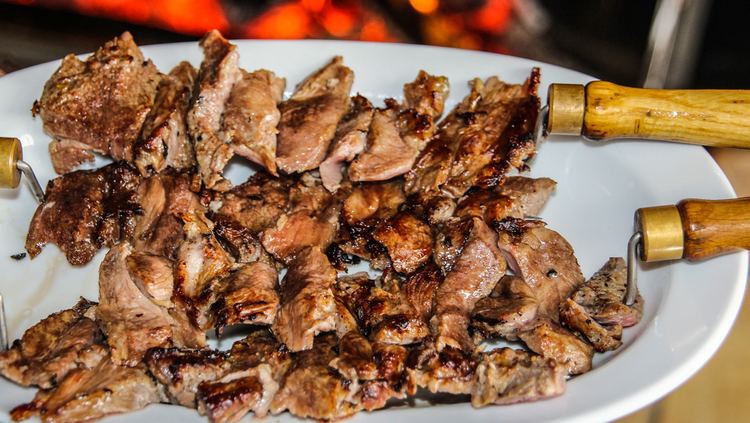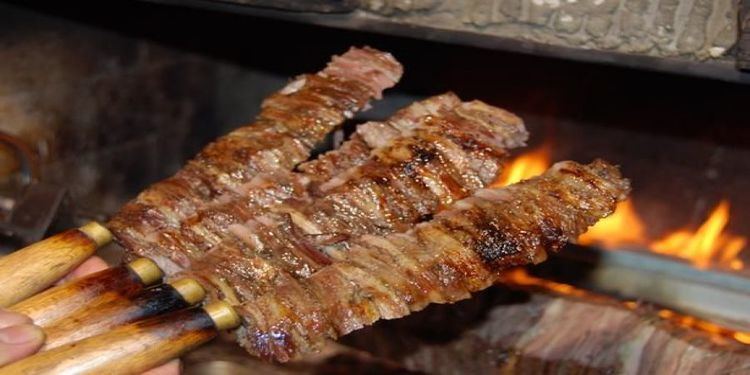Course Kebab Place of origin Turkey | ||
 | ||
Created by Disputed, with various lawsuits. Goes back to 18th century. Similar Doner kebab, Etli ekmek, Adana kebabı, İskender kebap, Qatayef | ||
Cağ kebabı ([ˈdʒaː cebabɯ]) is a horizontally stacked marinated rotating lamb kebab variety, originating in Turkey's Erzurum Province. The cities of Tortum and Oltu in the said province and Yusufeli in the neighboring Artvin province are in a heated debate concerning the origin of the dish. As such, in Turkish metropolises, this dish can be called "Oltu kebabı" or "Tortum kebabı" depending on the origins of the chef.
Contents

This uniquely prepared kebab has become, as years passed, a trademark of Erzurum where all the famous Usta, like Şakir Aktaş and Kemâl Koç, run restaurants. each claiming to be descending from the exclusive inventors.

Note that while it is increasingly available in most Turkish cities, the Cağ kebabı is especially popular in Bursa, whereas enjoying an ever-growing success in Istanbul and Ankara.

History
Ottoman travelbooks of the eighteenth century cite a kebab cooked on wood fire consisting of a horizontal stack of meat, known as "Cağ Kebabı" in the Eastern Turkish province of Erzurum, which is probably the ancestor of döner as we know it.
Etymology
The Turkish word "cağ" is IPA: [ˈdʒaː] borrowed from Armeno-Georgian. It means "spit" or skewer. Hence the name of the kebab that consists of meat impaled on a huge spit.
Preparation

Slices of lamb and large quantities of tail fat are left to marinate in a mixture of basil, black pepper, salt and sliced onions for the length of a day. They are then impaled on the spit (Cağ), and stacked thickly. The spit is then locked and transferred to the fire where there is a fairly complicated device that controls the cooking of the spit. This typically includes a mechanism for turning the meat, another one for raising and lowering it, and also dents on the side to move the stack towards the fire as it gets thinner after servings are repeatedly cut away.
Note that the meat used for Cağ kebabı is exclusively lamb.
